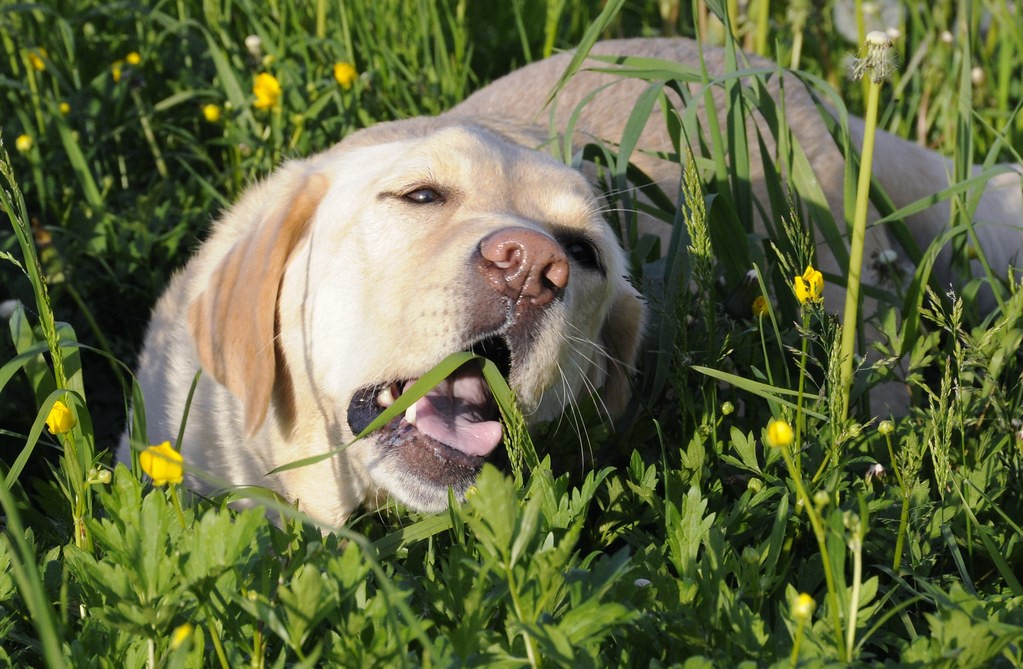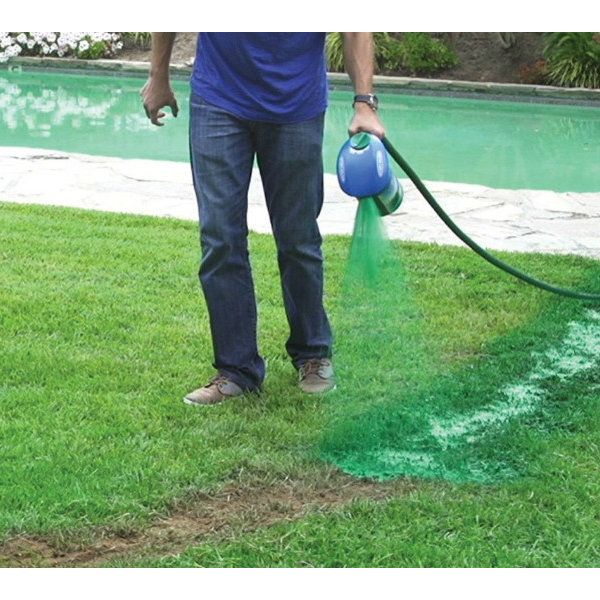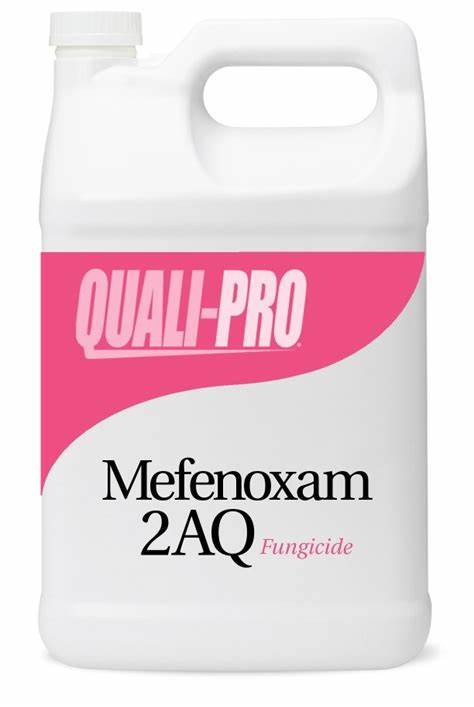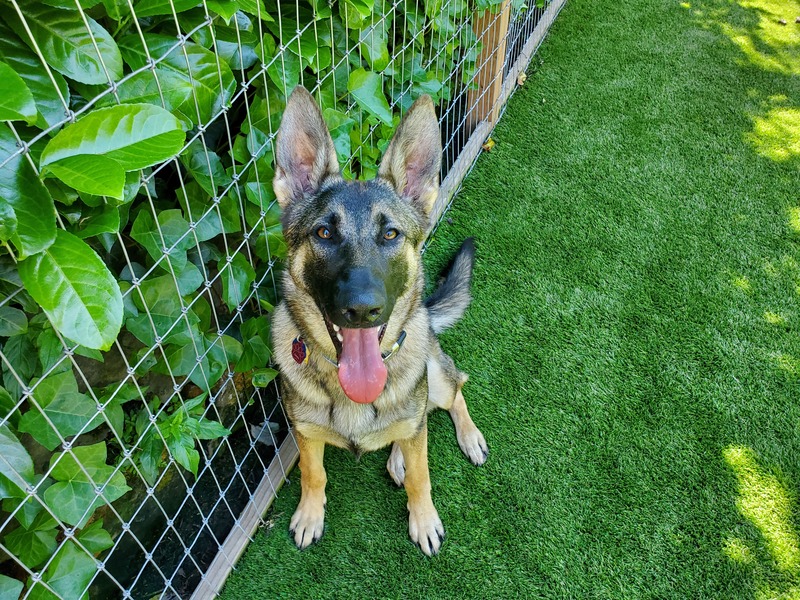Hydroseeding or Mefenoxam: A Grass Seed Guide for Dog Owners
Envision your puppy running joyfully across a verdant lawn, its tail swinging and its tongue lolling. While it may seem like a no-brainer to give your dog access to the great outdoors, there are a few things to keep in mind when designing the ideal play area for your four-legged friend.
The health and happiness of your pet can be greatly affected by the grass seed you use and how you plant it, although you may not know it at first.
In this piece, we’ll investigate the pros and cons of two common grass-seeding techniques, hydroseeding and mefenoxam, from the perspective of the safety of our canine and feline friends. We’ll also go over some alternatives and give you some pointers on how to make your outdoor space just right for your four-legged family member.
Therefore, let’s dig in and find out more about hydroseeding and mefenoxam, as an educated dog owner is a great dog owner.
Table of Contents
Can Dogs Eat Grass Seed Without Harm?
Grass seeds, which are tiny, oval structures that house the plant embryo, are essential to the spread of grass species and the maintenance of beautiful, green lawns that humans and their canine companions can enjoy. Some pet owners, however, may be concerned about the grass seed’s safety for their dogs.
While most grass seeds are completely safe for your pet, there are a few that could be harmful if ingested or if they penetrated the skin or became embedded in the fur.

The degree of danger depends on the type of grass seed, the stage of development at when it enters your dog’s body, and the location at which it becomes stuck.
Grass seeds vary in toxic potential depending on both the species of grass and the stage of maturation at which the seed is harvested. Your dog does not need to worry about eating a little grass because most types of lawn grass are completely non-toxic.
However, dogs should be kept away from large quantities of decorative grasses used in landscaping since they can be harmful. If you want to plant grass in your yard but are worried about whether or not it will be safe for your pet, you should always do some research and talk to your vet first.
Grass seeds represent a threat not because of their toxicity but because of their morphological characteristics.
A dog’s skin, ears, eyes, or respiratory tract are all vulnerable to irritation, inflammation, and infection from the two-centimeter-long, sharp or barbed seeds. Seeds can cause bowel obstructions and other digestive problems if swallowed. In addition, some invasive grass seeds can travel through your dog’s digestive tract, causing discomfort and possibly necessitating veterinary care.
For this reason, it is crucial to keep a constant eye on your dog whenever he or she is in regions with tall grasses or newly seeded lawns. Advice on how to lessen these dangers is provided later in the text.
Symptoms
Dogs may exhibit a wide range of symptoms after being injected with grass seeds.
Skin
Redness, swelling, and irritation at the point of entry are possible early symptoms once grass seeds enter a dog’s skin. Localized discomfort, inflammation, and abscess formation from infection might result from the seed’s further penetration into the tissue. Where the seed penetrates the skin, a small puncture wound or tract may be evident.
Some symptoms of discomfort and sensitivity in your dog may include excessive licking or biting at the affected area.
Eyes
Serious issues can arise from ignoring grass seed penetration in a dog’s eye. Discharge, inflammation, redness, and excessive tearing are all possible symptoms.
To alleviate the pain, your dog may squint, rub its face against things, or claw at its eye. Cloudiness or an obvious foreign object in the eye are symptoms of more serious instances.
Grass seeds can cause corneal ulcers, infections, and perhaps irreversible damage to the eye if they are not removed immediately.
Paws
Due to their constant touch with the ground when walking or playing, a dog’s paws are especially susceptible to grass seed penetration. Limping, licking, or gnawing at the feet, as well as noticeable swelling or redness between the toes or on the footpads, are all possible signs of grass seed entry.
There could even be a tiny puncture wound from the grass seed entering the paw.
Infected abscesses or injury to tendons and ligaments can develop if grass seeds are allowed to penetrate the paws untreated.
Keeping your pet healthy and happy through early detection and treatment of these symptoms. Please contact your veterinarian immediately if you observe any of these signs in your dog. If you act quickly, you can help avoid complications and speed up your pet’s recuperation.
Let’s have a look at the relative safety of the most well-known seeding techniques for your pet now.
An Overview of Hydroseeding
 Hydroseeding is a technique for sowing grass seed that involves blending the seed with a liquid solution that also includes mulch and fertilizer. Next, the slurry is sprayed onto the soil, where it creates a hospitable environment for the growth of the seeds.
Hydroseeding is a technique for sowing grass seed that involves blending the seed with a liquid solution that also includes mulch and fertilizer. Next, the slurry is sprayed onto the soil, where it creates a hospitable environment for the growth of the seeds.
The efficiency and effectiveness of this technology have led to its rising popularity among homeowners and landscapers. The hydroseeded grass takes less water to maintain than a traditionally seeded lawn and grows in thick and weed-free.
However, there are risks associated with hydroseeding that pet owners should be aware of:
Hydroseeding mix, for example, may contain chemicals that are harmful to dogs and other pets if they consume it or come into contact with it before it dries. Many types of fertilizer contain chemicals that might be toxic to dogs if consumed, so it’s important to make a thorough check for polymers and the type of fertilizer being used. The good news is that most fertilizers become non-toxic after 72 hours.
Keep your dog away from the hydroseeded area for at least 10-14 days so the seeds can germinate and the fertilizers and polymers can break down. It all depends on the type of grass you’re using and the weather outside. Any potential threat should have vanished by the end of this time frame.
Your contractor should be able to use organic fertilizer or compost if you need to bring your dog into the treated area during this period.
An Overview of Mefenoxam
 Mefenoxam is a fungicide commonly used in conjunction with grass seed to guard against diseases like damping-off and those caused by Pythium and Phytophthora, which are widespread pathogens affecting a wide variety of crops, including vegetables, fruit trees, and turf grass.
Mefenoxam is a fungicide commonly used in conjunction with grass seed to guard against diseases like damping-off and those caused by Pythium and Phytophthora, which are widespread pathogens affecting a wide variety of crops, including vegetables, fruit trees, and turf grass.
To prevent plant infections and diseases, this chemical molecule blocks the development of fungal pathogens. It can be used as a foliar spray to protect established plants or as a seed treatment to protect germinating seeds.
However, mefenoxam is harmful if consumed by both animals and humans.
Mefenoxam is poisonous to dogs and causes a wide range of symptoms including but not limited to vomiting, diarrhea, and kidney failure. Although the precise mechanism of toxicity is poorly understood, it is believed that the fungicide disrupts normal cell function throughout the body, notably in the kidneys.
Damage to organs and the release of poisons into the bloodstream are two possible outcomes of this interference, both of which can trigger a wide range of symptoms. These symptoms vary in intensity depending on:
Dogs can die from mefenoxam poisoning if they consume enough of the drug.
Therefore, until the substance has dried completely, it is essential to keep dogs away from the treated areas. Alternative fungicides that are safe for pets can be used to further restrict exposure, as can preventative steps that lower the likelihood of fungal illnesses in the grass.
Preventing Grass Seed Allergies in Your Dog
Protecting your dog from the potential risks of grass seeds requires a focus on prevention. By taking a few simple precautions, you may make your home safer for your pet and lessen the likelihood of accidents with grass seed.
Methods for Cleaning Grass Seed Off a Dog’s Fur
If a grass seed gets stuck in your dog’s skin or fur, you need to get it out as soon as possible.

The procedure is as follows:
Wearing gloves will prevent you from cutting your hands on the seed. Carefully expose the region under your dog’s fur where the grass seed is stuck.
Gently grab the grass seed by its exposed end, either with tweezers or your fingertips, and draw it out.
You should look around to discover if any more seeds have landed in unseen places.
After the grass seed has been removed, wash the area with antiseptic soap and water and cover it with antiseptic ointment.
Conclusion
As pet owners, our top priority is making sure our dogs have fun and stay healthy.
In order to make educated decisions about our lawns that prioritize the safety of our dogs, it is important to understand the potential risks associated with various grass seeding methods and treatments, such as hydroseeding and mefenoxam.
Injuries caused by grass seeds can be greatly reduced through preventative measures including as routine inspections, grooming, and lawn maintenance, as well as the selection of pet-friendly grass kinds and treatments.
You may choose the greatest choice for your lawn and guarantee numerous hours of fun and frolic for your four-legged companion by applying these practical procedures and keeping your pet’s safety in mind.





